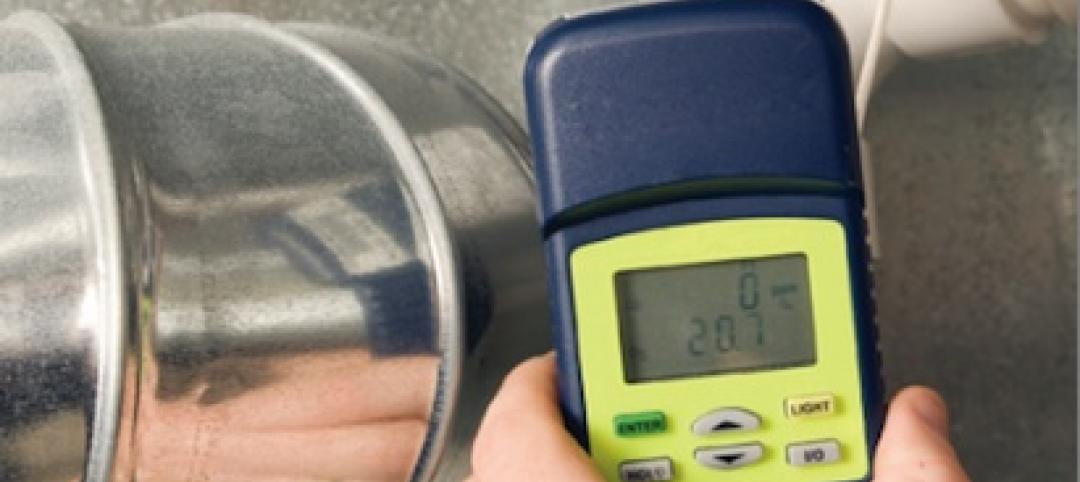Enhanced ventilation and filtration can improve the cognitive function and health of a building’s occupants, and should be the preeminent strategy for healthy buildings.
That’s the conclusion of COGfx Study 3: Global Buildings, new research by the Harvard T.H. Chan School of Global Health, which has been investigating the relationship between indoor air quality and cognitive performance since 2014. The latest study is the first to take a global approach, encompassing 302 office workers in 42 buildings across 30 cities and six countries—China, India, Mexico, Thailand, the United Kingdom, and the U.S.
This study builds upon and corroborates two previous research projects that the T.H. Chan School had conducted over the past several years. The first tested 24 lab workers for six days over two weeks and found 61% higher cognitive scores among those in green vs. conventional buildings, and 100% higher scores in enhanced green buildings. The second tested 109 participants in 10 buildings and five U.S. cities over a week’s time, and recorded 26% higher cognitive scores among those people in green-certified buildings vs. high-performance but non-certified buildings.
The latest, more expansive, study tracked occupant performance over 12 months. The study concluded that occupants’ cognitive function improves by increasing a building’s ventilation (i.e., the rate of air exchange) in ways that reduce its interior inhalable particulates (PM2.5 specifically) and carbon dioxide (CO2)
The third study, whose findings were released last week, used real-time environmental sensors (including wearable monitors) and a customized Harvard Healthy Buildings mobile app to collect data and administer momentary assessments of cognitive function, health, and occupant satisfaction.
IAQ IS NOW CRITICAL TO INTERIOR DESIGN
Even small effects of cognitive function and health can translate into substantive short- and long-term benefits, the study reports. “When you consider that 90% of the costs in a building are associated with the people inside, including salaries and benefits, the ability to improve cognitive performance and reduce infectious disease transmission, sick building symptoms, and missed workdays through improved air quality is powerful.”
As more people return to their workplaces and schools after prolonged pandemic quarantines, “the health, safety, and intelligence of indoor environments have come into greater focus,” says Dave Gitlin, Chairman and CEO of Carrier, the HVAC supplier which provided a gift to help fund this research. “The COGfx Study continues to demonstrate that proper ventilation and filtration of indoor environments play important roles across the globe in fostering a proactive health strategy.”
Carrier’s Healthy Buildings Program, which serves several typologies, offers innovations that include a digital, cloud-native platform for aggregating data from different systems and sensors; OptiClean, a portable negative air machine; and Indoor Air Quality assessments for devising health building strategies.
Funding for the Harvard study also came from the National Institutes of Health, the National Institute of Environmental Health Sciences, and the National Institute for Occupational Safety and Health. JLL provided additional support.
Related Stories
| Aug 23, 2013
Demand for commissioning services on the rise: PECI/BCA survey
Demand for the services of commissioning professionals is rising and will continue to rise into the near future, according to a survey by PECI and the Building Commissioning Association (BCA).
| May 1, 2013
World’s tallest children’s hospital pushes BIM to the extreme
The Building Team for the 23-story Lurie Children’s Hospital in Chicago implements an integrated BIM/VDC workflow to execute a complex vertical program.
| Apr 1, 2013
Half of building owners use 'smart' technologies, says survey
A survey of 291 building owners by IDC Energy Insights shows that 50% of owners use smart building technologies, such as HVAC controls, lighting controls, and analytics/data management.
| Feb 3, 2013
Electronic surveying improves accuracy on BIM-driven hospital project
A mechanical contractor combines an electronic surveying tool with a BIM model to make significant productivity gains in a large-scale hospital project.
| Feb 3, 2013
Clever engineering helps create design excellence
A mechanical engineering team overcomes numerous hurdles to help make a new federal courthouse in Iowa a showpiece of ‘government work’ at its best.
| Aug 1, 2012
CFSI ranked among Top 10 Mechanical Contractors in D.C.
Included in the Washington Business Journal list for the second year running.














